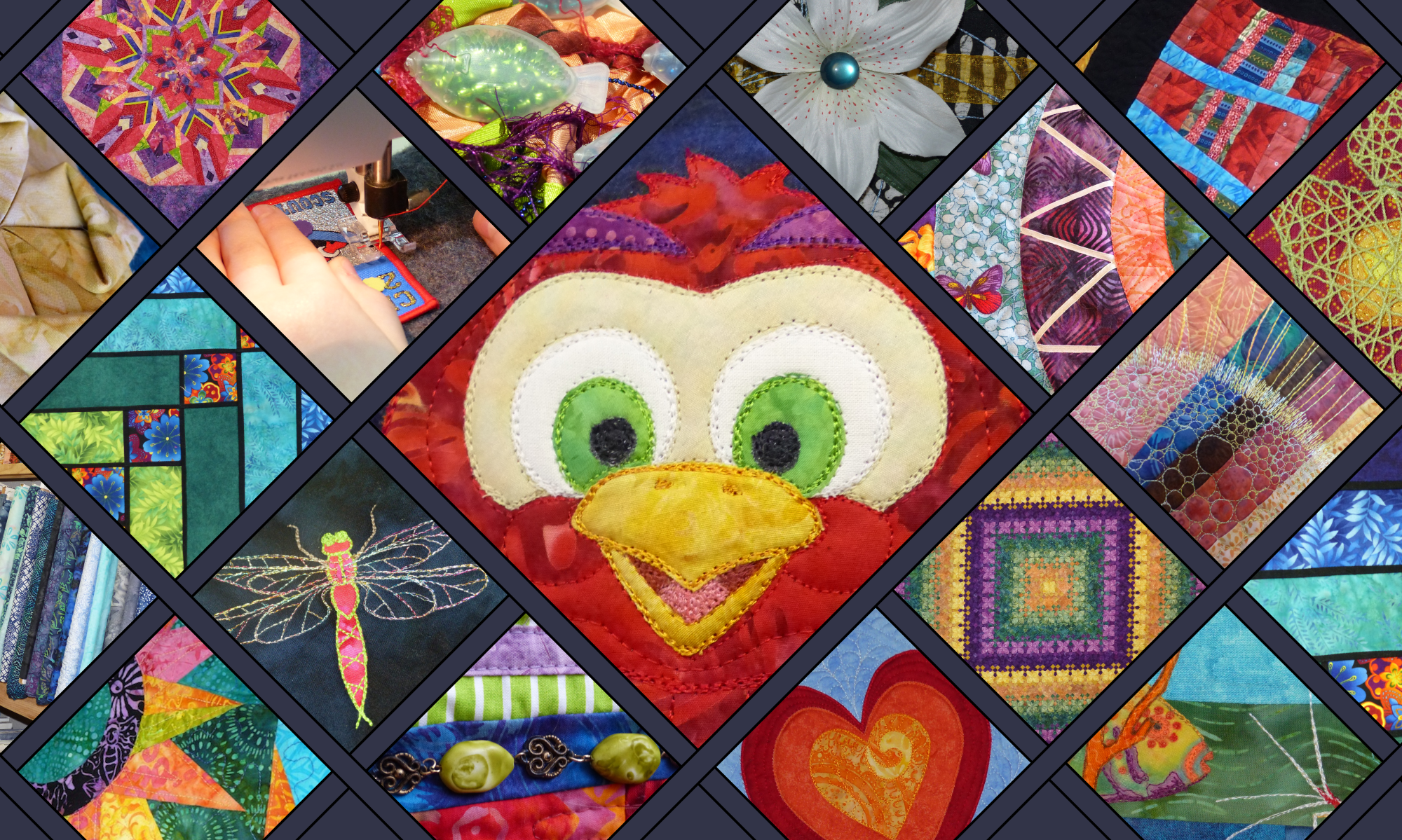
31 Days of Finding Quilt Inspiration in Real Life
There are so many things that we fail to see in life. And sometimes it’s not even our fault. Some things are just too small to appreciate fully without special effort. There is a world of inspiration in the tiny, the minuscule and the molecular. All you need is a means of magnification.
Finding Quilt Inspiration in the Everyday: Day 30
 My train of though started today with the flowers on a tree growing on our council strip. This tree was tiny when we moved here, but was growing well until it was attacked by a vandal. Pretty much ever since, my young daughter has been cheering this tree on. This year it matured and flowered for the first time, so I am finally able to easily identify it. It is a White Cedar (Melia azedarach, also known as China Berry), one of the very few deciduous Australian natives. The berries are toxic (good to know) to humans and most animals but not birds. Apparently cockatoos like them, so I hope the cockatoos in our area find it. Otherwise the berries are going to make an almighty mess on the pavement and hubby is not too pleased about the prospect of that.
My train of though started today with the flowers on a tree growing on our council strip. This tree was tiny when we moved here, but was growing well until it was attacked by a vandal. Pretty much ever since, my young daughter has been cheering this tree on. This year it matured and flowered for the first time, so I am finally able to easily identify it. It is a White Cedar (Melia azedarach, also known as China Berry), one of the very few deciduous Australian natives. The berries are toxic (good to know) to humans and most animals but not birds. Apparently cockatoos like them, so I hope the cockatoos in our area find it. Otherwise the berries are going to make an almighty mess on the pavement and hubby is not too pleased about the prospect of that.

The flowers of this tree are insignificant on their own but they bloom in impressive bunches. However, if you magnify the flowers, you can see that they are really quite pretty and almost orchid like. It is the purple stamen tube with the yellow stamens sticking out that has the most visual impact, but without magnification you are unlikely to notice this….. each tube is only 1/4″ long.
And this got me thinking back to my days as a molecular biologist and geneticist. In that life, looking down a microscope was an everyday experience for me. And I often marvelled at the hidden structure of things.
Contemplating Magnification as Quilt Inspiration
These days I am reliant on a magnifying glass I stole from one of my kids and my camera for looking more closely at things. These are tools you can probably access too. Magnifying glasses are available pretty widely, and a basic one is just a few dollars. So the real question is: where to look?

Biology is an amazing place to start for pleasing designs. Flowers obviously. But there are so many other things that also become even more interesting with magnification. Feathers. Bugs (have you ever considered the beauty of the compound eye?). Shells. Leaves. Ferns. Skin. Fossils. Microscopic creatures. Cells. I could keep listing here for hours, but I won’t. Grab a magnifying glass or a camera with a zoom function and just start looking around you.
Try taking photos, magnifying and then cropping them. Sometimes destroying the context of an object or only showing a portion of it adds enormously to its artistic appeal. That’s the brilliant thing about digital cameras. No limits to the number of photos you can take, and no limits to the alterations you can make to them.


Many, many amazing abstract art pieces have had their start in magnified nature. This is certainly not a new idea for art or quilt inspiration. But it is an idea that will probably never be exhausted. There is no copyright on the feather you found at the park. And no limit to the ways you can interpret it either. That is between you, your imagination and your sewing machine.
If you’ve done something like this and you’d like to share your quilts and/or ideas here, I’d love to hear about them. Don’t forget to comment below. 🙂
And if you’ve enjoyed this, don’t forget to check out previous posts in my 31 Days of Finding Quilt Inspiration in the Everyday series. Tomorrow is the last day!
P.S.
Just before I leave you today, I want to share an interesting example of taking this concept to the extreme. Beverly St Clair likes to quilt representations of DNA. She has done a few helix quilts. But the ones that caught my fancy a few years back are those where she has assigned each of the four main chemical components of DNA an orientation of the half square triangle. She has then turned various DNA sequences into quilts by piecing half square triangles to match the code. Go take a look, it’s a fascinating idea!


